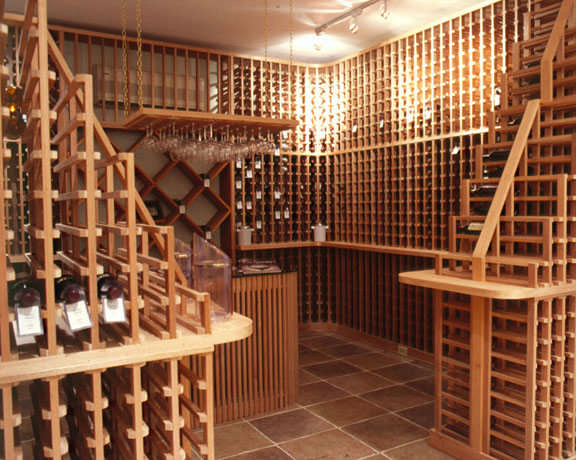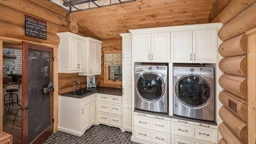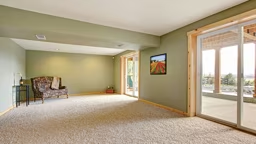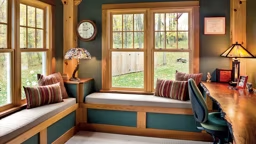 Credit: Lindal Cedar Homes of Seattle photo
Credit: Lindal Cedar Homes of Seattle photo
America’s growing fascination with wine—consumption increases some 10 percent every five years, according to data tracked by the Wine Institute in San Francisco—has not been lost on log-home owners. Indeed, investing in the timeless natural retreat of a log home for a more leisurely, contemplative lifestyle seems to go hand in hand with the oenophile outlook, and requests for wine cellars reflect that trend. “A house we are about to begin construction on soon has an outdoor wine cellar that was actually a bank vault where the previous landowners kept their bootleg booze back in the ’20s,” says Jeff Wirth, director of sales and marketing for Kootenai, a 41-home log-home development in Montana’s Swan Valley. “It’s a 10-foot-by-12-foot room, and we are restoring the old vault door.”
Ken Whipple of Lindal Cedar Homes says wine storage has come out of the basement in tandem with the larger trend of log-home owners moving to increase the features and functionality of their outdoor spaces. “We have done both interior and exterior wine cellars. There have been plenty of outdoor applications,” he says. “It’s just another example of how creative and well-designed outdoor spaces make the homeowner feel that the exterior and interior of their home has become unified as a living environment.”
Wirth adds that exterior wine cellars dug into the earth offer a greater temperature stability compared to their basement brethren. “Wine cellars benefit from the most stable temperatures when underground,” he says. “Simple thermostats and self-contained temperature control systems will be de rigueur in any wine-storage application, anyway.”
5 wine storage tips:
|











